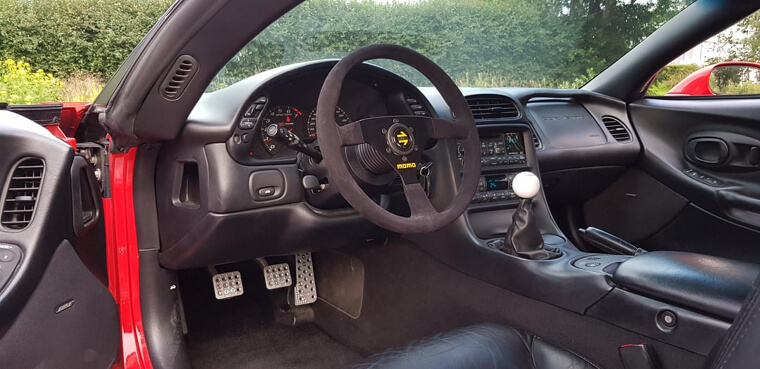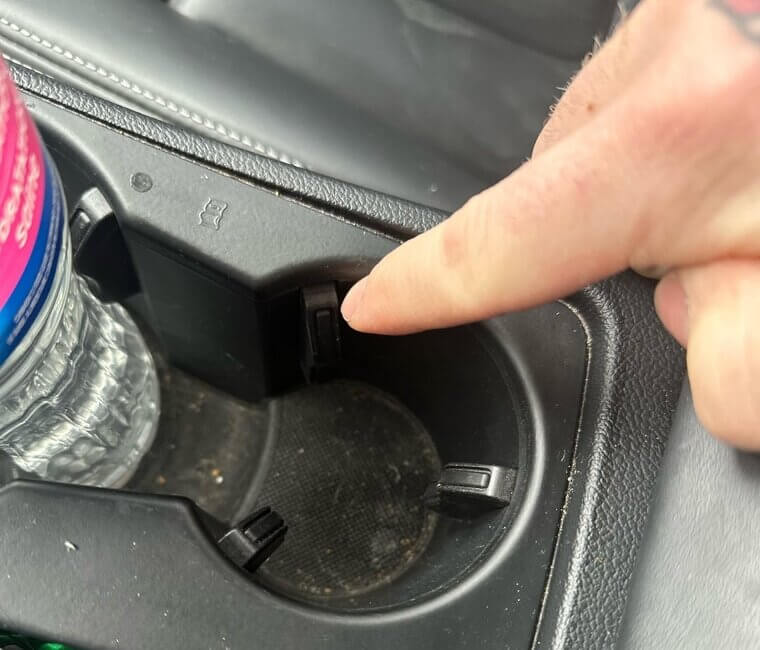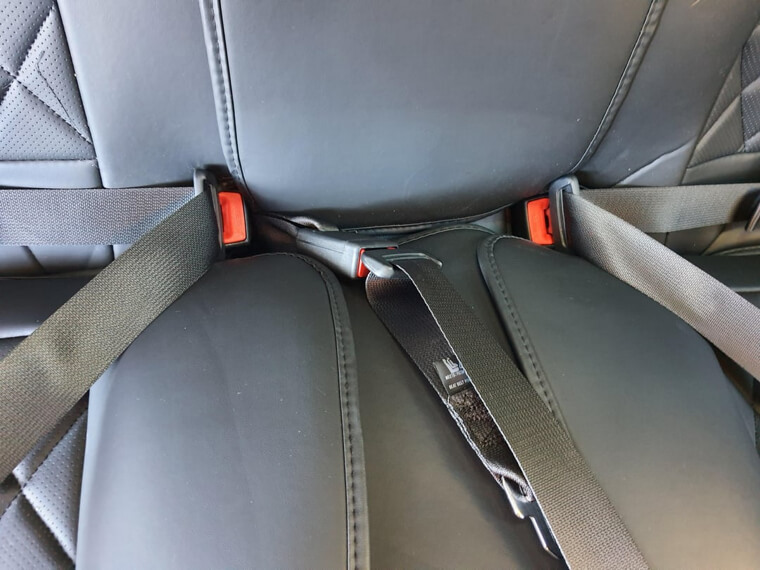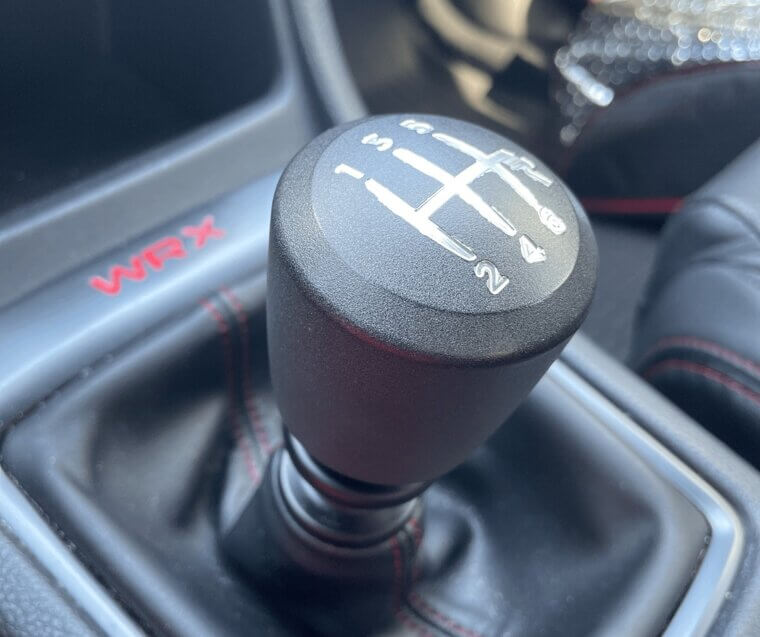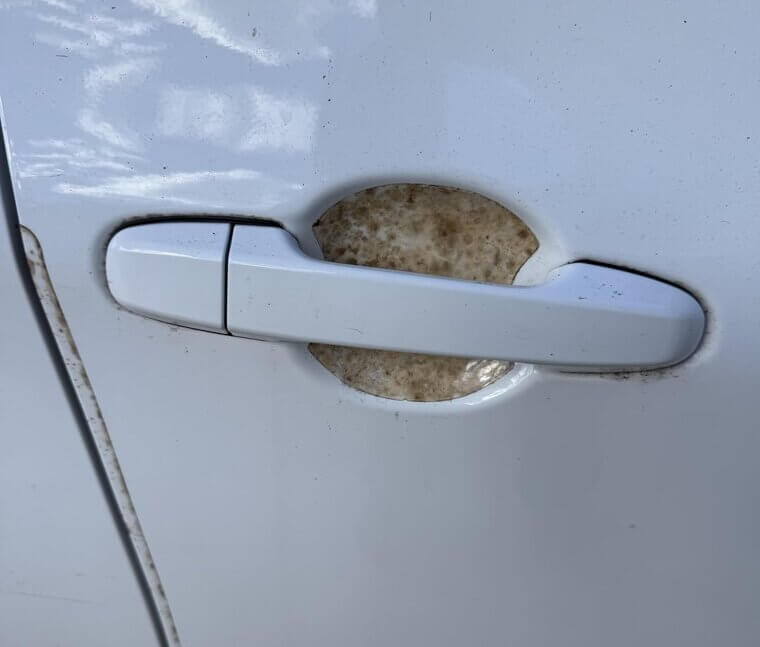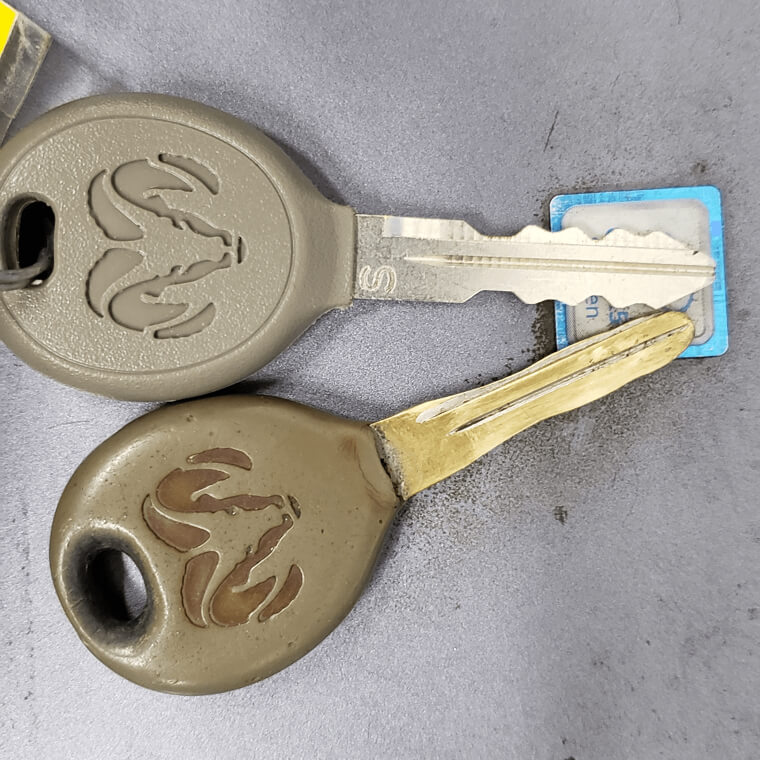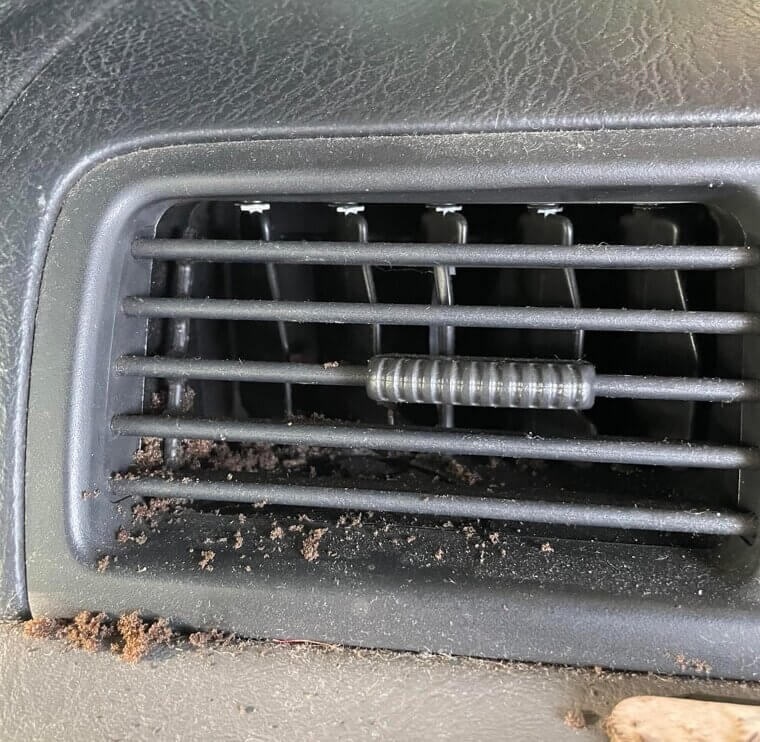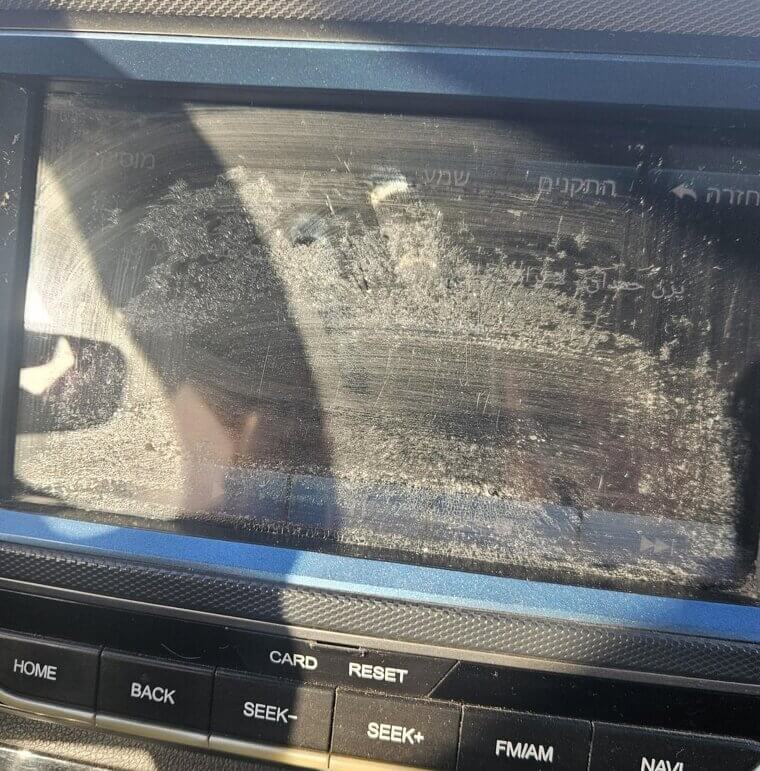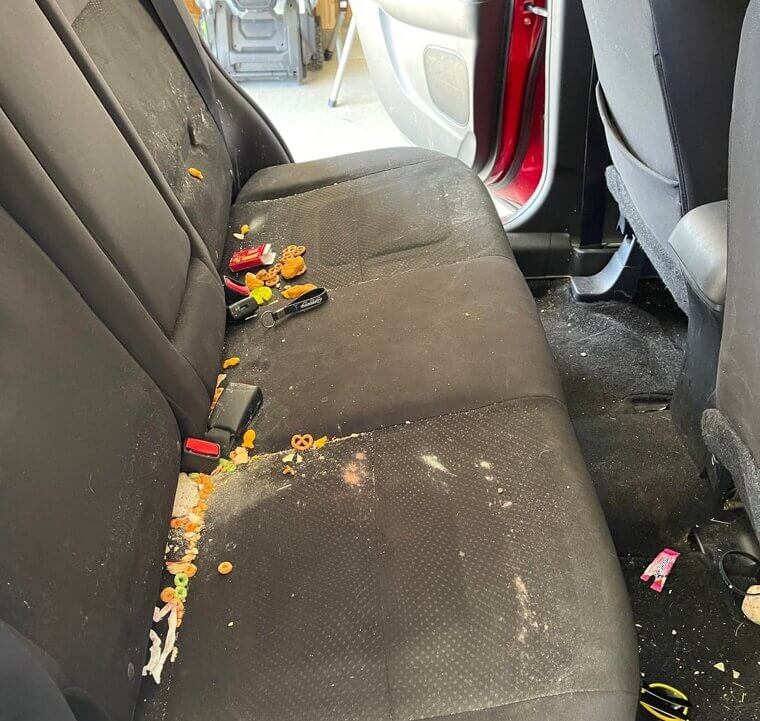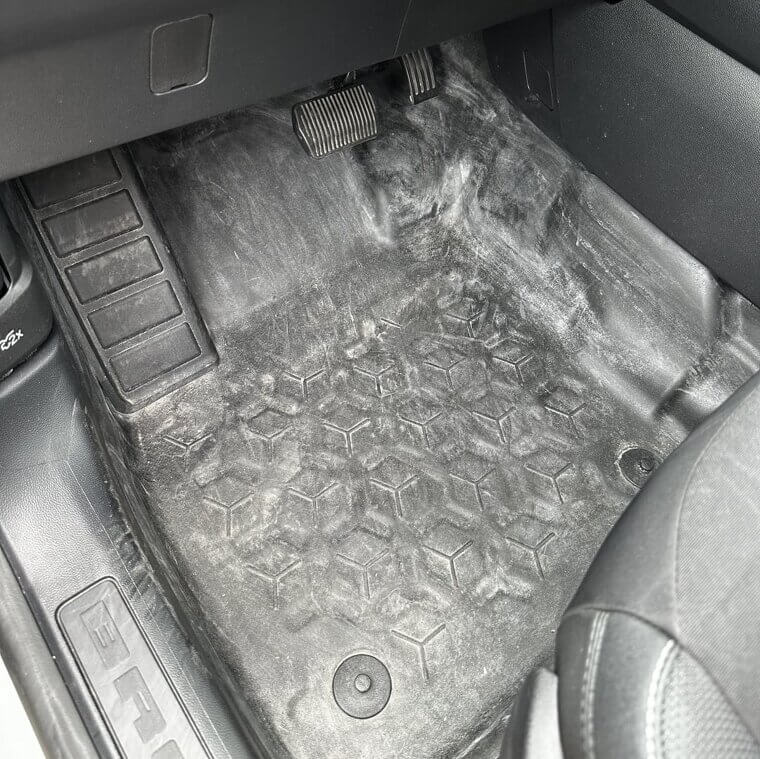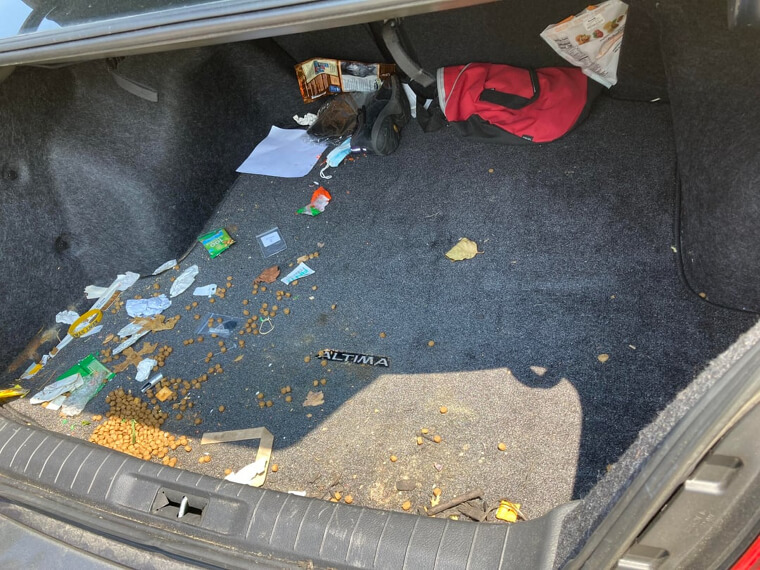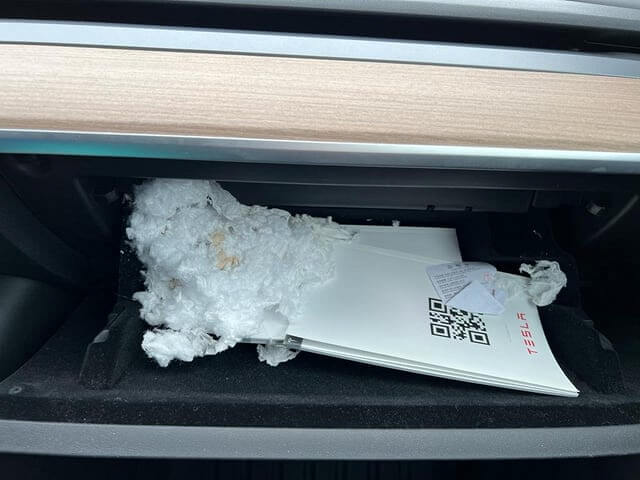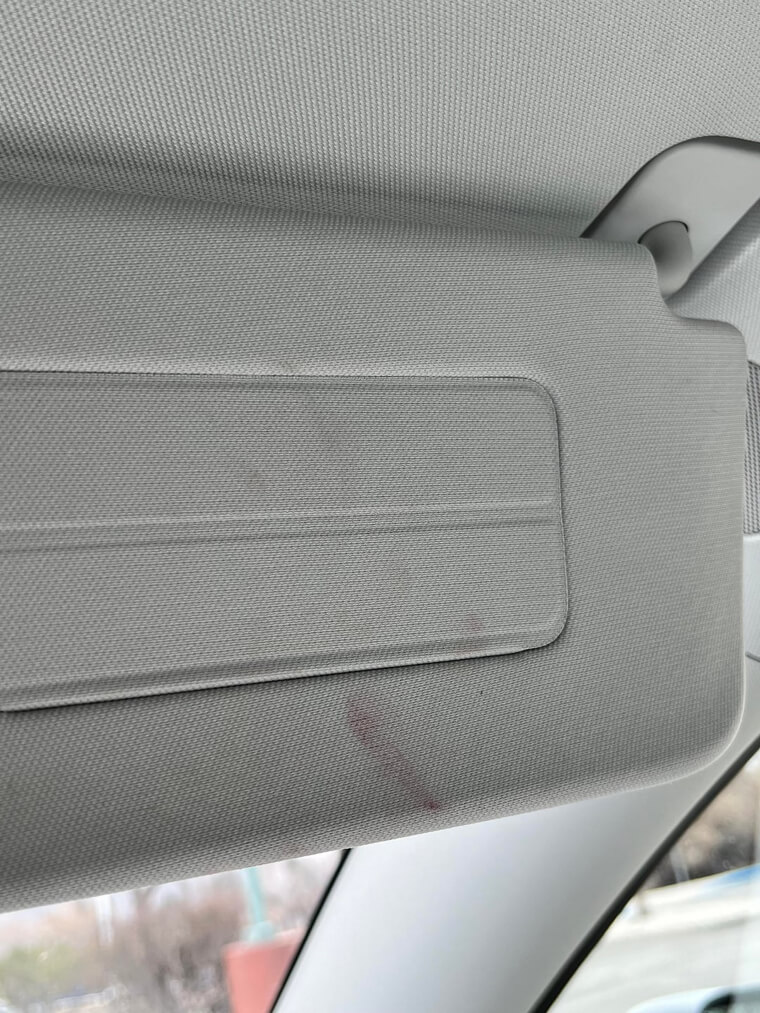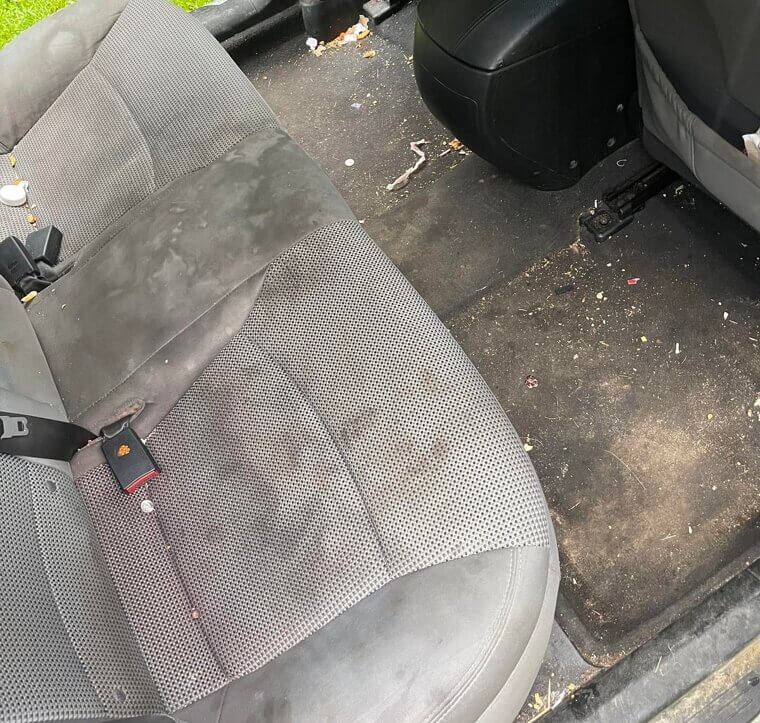Steering Wheel
The steering wheel is the dirtiest part of most cars and the most ignored when it comes to cleaning. Research shows that an average steering wheel can harbor more than 600 units of bacteria per square inch, far higher than what is found on a typical toilet seat. Drivers constantly touch it after handling food, phones, gas pumps, and money. The surface warms up in sunlight, creating an ideal environment for bacteria to grow. Most people rarely clean it, which allows grime and germs to accumulate. Because hands naturally produce oils and sweat, every drive adds another layer of contamination. To keep your steering wheel cleaner, use disinfecting wipes made for car interiors at least once a week. If you eat or drink while driving, it is worth wiping it down more often. A quick disinfecting routine keeps germs from spreading from your hands to your face, which happens far more often than you might think.
Cup Holders
Cup holders are a perfect breeding ground for germs because they catch everything from spilled coffee to condensation. Over time, liquids dry and leave behind sticky residue that attracts bacteria, mold, and even small bugs. Food crumbs and dust collect in the crevices, and most people only wipe them occasionally, if ever. Studies have shown that cup holders often contain more bacteria than a toilet seat, especially when left damp. They are also difficult to clean because the narrow openings trap residue deep inside. To fix this, soak a paper towel with cleaner, wrap it around a small bottle, and twist it inside the holder to remove grime. Finish with a disinfecting wipe and let it dry completely before placing drinks inside again. Avoid leaving uncovered beverages or food wrappers in your cup holders since they can introduce new bacteria. Regular cleaning prevents odors, sticky buildup, and bacteria growth that spreads every time you touch your drink.
Seat Belts
Seat belts are handled by everyone who rides in your car but are almost never cleaned. The belt fabric collects sweat, body oils, and food particles, which together form an invisible layer of grime. When exposed to sunlight and moisture, that layer becomes a breeding ground for bacteria. The buckle area is particularly dirty because crumbs and spills settle inside the small crevices. Over time, that residue creates unpleasant odors and even discoloration. Laboratory tests have shown that seat belt straps can hold hundreds of bacterial colonies per square inch. Cleaning them is simple and only takes a few minutes. Use a cloth soaked in warm water and mild soap to wipe down the strap and buckle. Avoid using bleach since it can damage the fibers. Cleaning every few weeks keeps the belt safe and sanitary. Most drivers forget this step, but maintaining clean seat belts improves both hygiene and the overall feel of the car interior.
Gear Shift Knob
The gear shift knob is one of the most frequently touched parts of any car but rarely gets disinfected. Hands transfer bacteria every time you shift gears, and the textured surface traps dirt and oils. In studies comparing car interiors to household items, the gear shift consistently ranked among the dirtiest. Many drivers eat in their cars or handle their phones before touching the shift knob, which adds to contamination. Over time, the surface builds up a film that dulls its appearance and harbors germs. Cleaning it regularly with an interior-safe disinfectant can drastically reduce bacteria. Use a microfiber cloth and a mild cleaner, and avoid products that leave a slippery residue. Drivers who share cars or use them for work should clean the knob more often to prevent the spread of germs between users. It is a small area that makes a big difference in reducing the overall bacterial load inside your car.
Dashboard
Your car’s dashboard collects dust, pollen, and airborne particles that circulate through the vents. Warm sunlight heats the surface, creating the perfect environment for bacteria to multiply. The dashboard is also where people often rest their phones, coffee cups, or receipts, which introduces new germs. When air conditioning or heat is turned on, airflow moves these particles into the cabin, spreading them even further. Studies have found that dashboards are among the most contaminated surfaces in vehicles. Cleaning only with a dry cloth moves the dirt around instead of removing it. Use a soft cloth with disinfecting spray or wipes specifically made for car interiors. Wipe carefully near the air vents and along seams where debris hides. A clean dashboard not only looks better but also improves air quality inside your car. Routine cleaning helps prevent the build-up of allergens and bacteria that thrive in dust and heat.
Door Handles (Inside and Outside)
Door handles are constantly touched by hands that have come in contact with contaminated surfaces like gas pumps, shopping carts, and phones. Exterior handles are exposed to weather and pollutants, while interior ones collect skin oils and dirt from daily use. Researchers have found that car door handles can carry thousands of bacterial colonies. Because handles are high-contact points, they easily transfer germs between drivers and passengers. Cleaning them once a week is simple and effective. Use disinfecting wipes for the interior and mild soap and water for the exterior. Pay close attention to the crevices where grime builds up. For chrome handles, dry them immediately to prevent water spots. Keeping these areas clean helps stop bacteria from spreading every time someone opens or closes the door. A clean handle also improves the look of your car and prevents odors from developing where hands touch most.
Car Keys and Key Fobs
Car keys and electronic fobs are used daily but almost never cleaned. They get placed on tables, inside bags, and on public counters, picking up germs along the way. Their small buttons and ridges collect grime, sweat, and bacteria. Over time, this buildup becomes sticky and unsanitary. Studies show that keys and key fobs can carry more bacteria than phones or toilet seats. Because fobs contain electronics, they cannot be soaked in water. The best way to disinfect them is with a slightly damp cloth and a small amount of alcohol-based cleaner. Pay special attention to the spaces around buttons and key rings. If several people drive the same car, cleaning keys regularly prevents the spread of bacteria from one person to another. Keeping your keys clean helps reduce the bacteria that transfer from your hands to your steering wheel, and ultimately to your face, throughout the day.
Air Vents
Air vents circulate the air you breathe and often spread germs throughout the cabin. Dust, pollen, and mold spores build up inside, especially if the air filter is old. When the air conditioning or heat is turned on, those particles blow directly at you. Moisture from the HVAC system adds to the problem, creating a perfect environment for bacteria and mildew. Vents that smell musty are often contaminated with mold. To clean them properly, use a vent brush or compressed air to loosen debris, then wipe the slats with a disinfecting cloth. Replace cabin air filters regularly to prevent buildup inside the system. Regular maintenance not only removes bacteria but also improves air quality and prevents respiratory irritation. Clean vents make the entire car feel fresher and safer to drive, especially for those with allergies or asthma.
Touchscreen and Buttons
Modern vehicles rely heavily on touchscreens and buttons, which act like magnets for germs. Every time you tap or adjust settings, you leave behind oils and bacteria from your fingertips. Warmth from the electronics encourages microbial growth. Touchscreens also attract dust, food residue, and drink splashes. Laboratory studies have shown that car screens can carry more bacteria than a cell phone. Cleaning is easy but often overlooked. Use a microfiber cloth slightly dampened with an electronics-safe cleaner. Avoid using window cleaner or alcohol directly on the screen, which can damage its coating. Control buttons and knobs need equal attention since they are handled just as often. Clean these areas weekly, especially in shared vehicles or rideshares. Keeping the interface clean not only prevents germ buildup but also extends the life of your controls and keeps your car looking polished and hygienic.
Seats and Upholstery
Car seats and upholstery harbor bacteria, dust, and allergens that collect over time. Every passenger adds skin particles, sweat, and food residue to the fabric. If you have pets, the contamination multiplies with dander and fur. Fabric seats trap moisture that encourages bacterial growth and unpleasant odors. Leather seats may look cleaner but still accumulate oils and germs. Studies show that car seats can contain more bacteria than public restrooms, particularly in family or shared vehicles. To clean them, vacuum thoroughly to remove debris, then use a fabric-safe disinfectant or leather cleaner. Focus on seams where crumbs and hair collect. Regular cleaning every month prevents odor and maintains appearance. Keeping upholstery clean is not just about looks, it is about reducing health risks that come from constant contact with contaminated surfaces.
Floor Mats
Floor mats collect everything from mud to spilled drinks and are one of the dirtiest areas inside a car. Shoes carry bacteria from sidewalks, public restrooms, and parking lots. When that dirt dries, it becomes airborne each time someone steps inside. Moisture from rain or snow creates a breeding ground for mold and mildew. Most drivers vacuum mats but rarely disinfect them. To clean thoroughly, remove them from the car, rinse with soap and water, and spray with a disinfectant before drying. Rubber mats are easier to sanitize than carpet ones, which should be deep cleaned occasionally. Keeping floor mats clean prevents odors and reduces bacteria that spread through the air. Since feet constantly move dirt around, this area deserves more attention than it usually gets.
Trunk Area
The trunk often doubles as storage for groceries, sports gear, and cleaning supplies, but few people ever clean it. Spilled liquids, food residue, and soil from plants create bacteria-friendly conditions. If pets or luggage are placed in the trunk, they leave behind fur, moisture, and dust. Mold and odor develop quickly in the enclosed space. Vacuuming removes visible debris, but disinfecting spray is needed to eliminate hidden germs. Line the trunk with a washable mat or plastic tray to make cleaning easier. Wipe surfaces after carrying groceries or outdoor equipment. Keeping the trunk clean prevents bacteria and odors from spreading to the rest of the car, especially through air circulation when the seats fold down.
Glove Compartment
The glove compartment might look harmless, but it collects dust, crumbs, and bacteria from the items stored inside. Receipts, napkins, and tissue packs can trap moisture and create a breeding ground for mold. Some people keep snacks or medicines there, which only adds to contamination. Because the compartment is rarely opened for cleaning, germs thrive in the dark, warm space. To disinfect it, remove everything, wipe the interior with a mild cleaner, and let it dry completely before restocking. Keep only essential items and avoid food storage. Cleaning it once every few months prevents musty smells and hidden bacterial buildup. It may not look dirty, but the glove box can harbor more contamination than you might expect.
Sun Visors
Sun visors are touched frequently but almost never cleaned. Drivers flip them up and down with hands that have handled steering wheels, coffee cups, or phones. Over time, fingerprints, makeup residue, and dust create a layer of grime. Because visors are close to your face, bacteria easily transfer during use. Fabric-covered visors trap dust and allergens, while plastic ones attract smudges. Wipe them with a gentle cloth and interior cleaner to remove buildup. For cloth visors, a damp microfiber towel works best. Cleaning them regularly keeps your car interior looking fresh and helps reduce bacteria near eye and mouth level. It is an easy habit that greatly improves hygiene and comfort.
Car Carpets
Car carpets absorb everything that falls from shoes, seats, or the air. They trap bacteria, food crumbs, and moisture that create persistent odors. When drinks spill or snow melts, the dampness encourages mold growth beneath the surface. Standard vacuuming removes visible dirt but not the germs embedded deep in the fibers. Shampooing or steam cleaning the carpet every few months kills bacteria and freshens the cabin. Use an antibacterial spray in between deep cleanings for added protection. Clean carpets improve air quality, reduce allergens, and make the car more pleasant overall. Ignoring them allows bacteria to spread throughout the vehicle, especially when air from the vents circulates across the floor. A clean carpet is the foundation of a sanitary interior.

